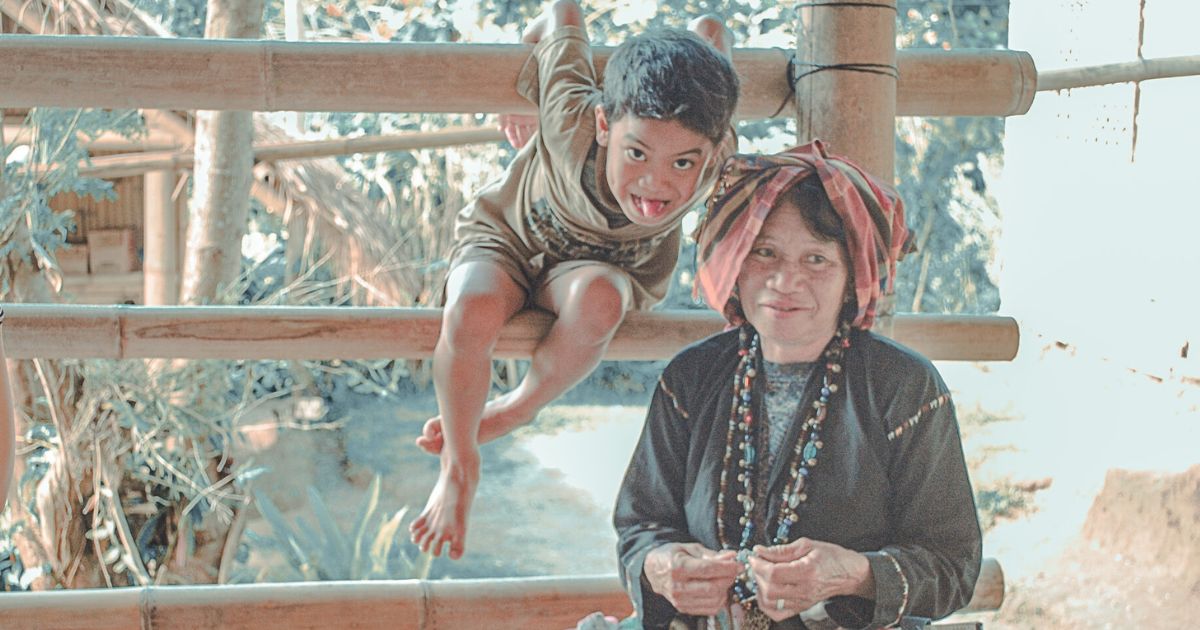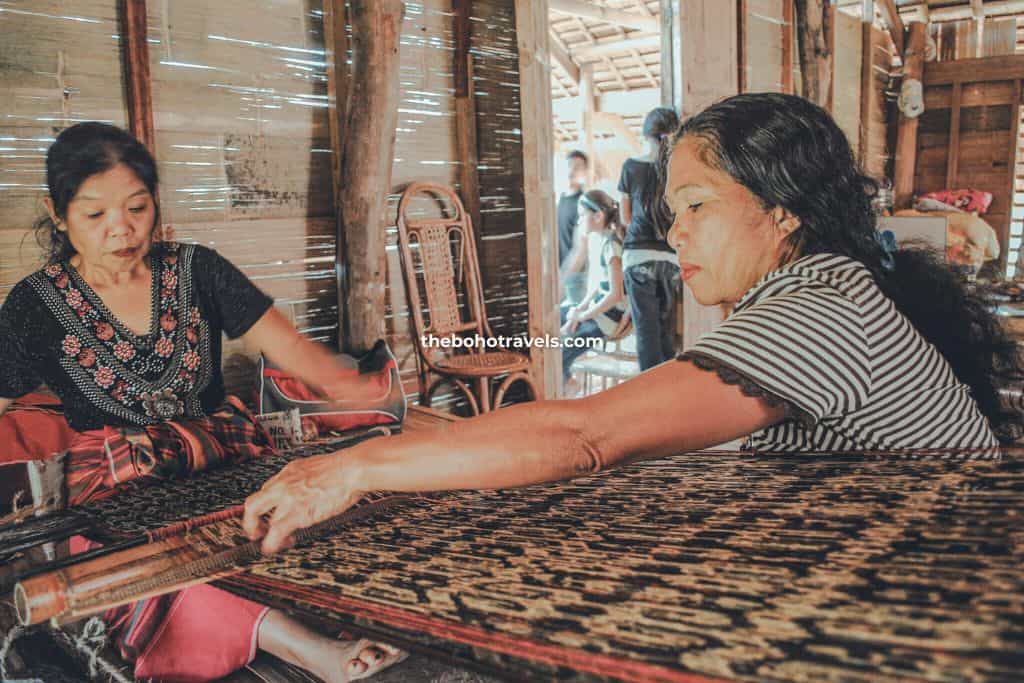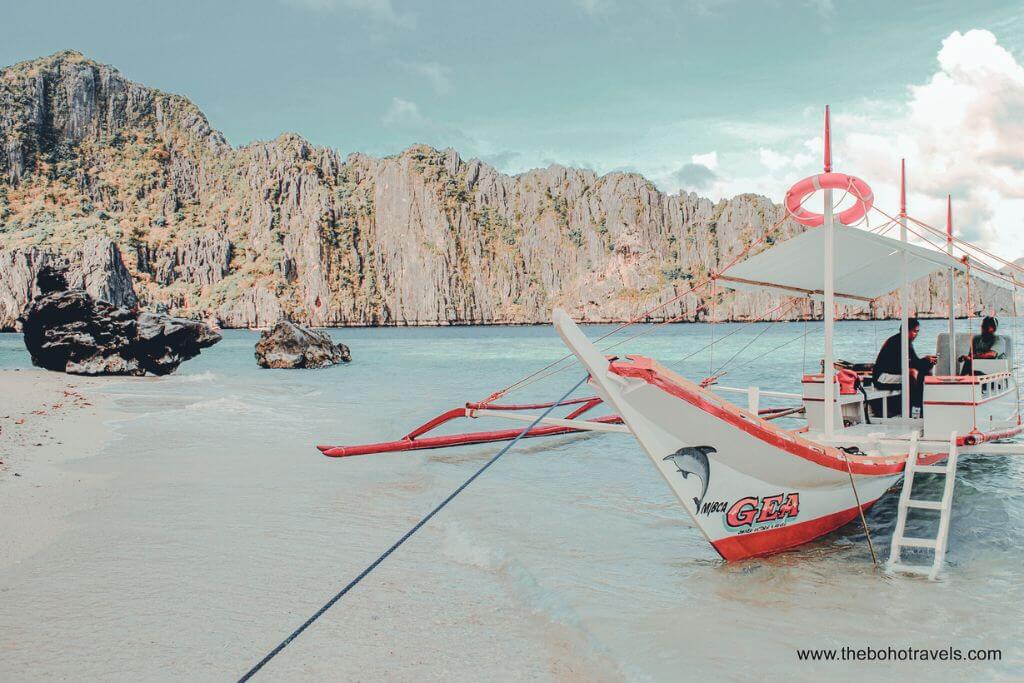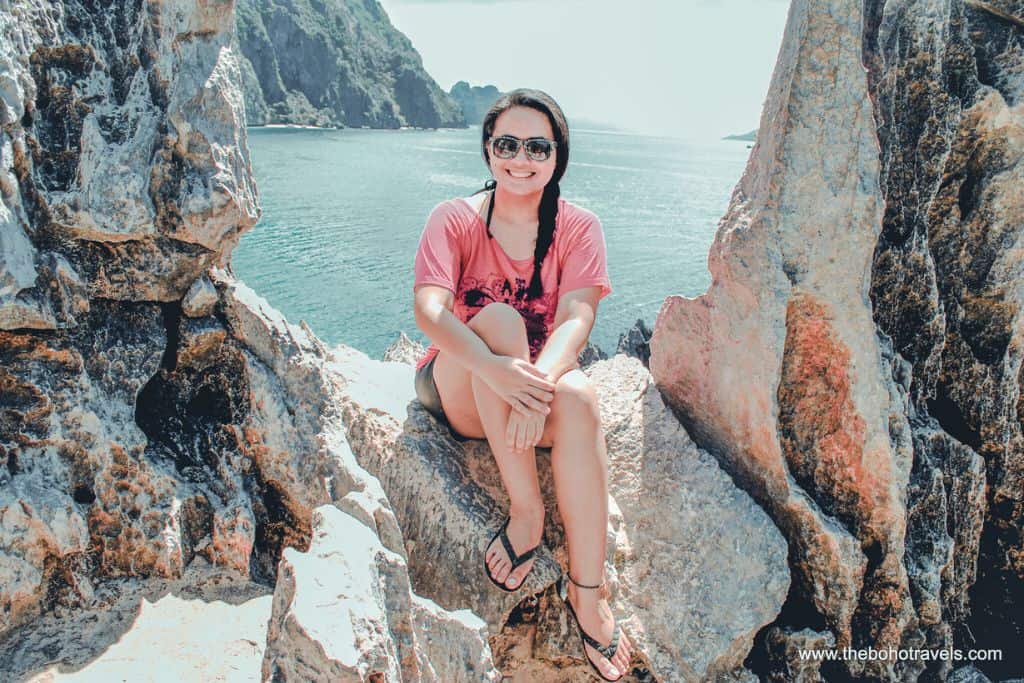Experiencing T’boli culture at the Lake Sebu School of Living Traditions

After meeting the Oldest Mambabatok Apo Whang-od in Kalinga and meeting the beautiful people of Sabangan and Guinaang in the Mountain Province, we’re now on to the next leg of our trip: meeting the T’boli community in Lake Sebu, South Cotabato.
Planning your trip? Use my favorite resources.
Here are my recommended and what I think are the best travel planning resources for your next trip!
🛌 Accommodation: I recommend Agoda.com
✈️ Flights: I recommend Trip.com
🚂 Land Travel (Bus, Train, Vans, Cars): I recommend 12go
🏞️ Tours and Experiences: I recommend Klook
🛡️ Travel Insurance: I recommend SafetyWing
*These are all travel resources I personally use for planning and booking my trips. If you use them, some of them will earn me a commission at no extra cost to you. This helps reduce the ever-increasing costs of keeping my site up. Thanks!
Lake Sebu, South Cotabato
Known as the Summer Capital of Southern Mindanao, Lake Sebu is a South Cotabato municipality offering beautiful weather and scenic landscapes. It is also famous as the Home of T’nalak Weavers (T’boli Dream Weavers).
After our 12-hour trip from Manila, we arrived at Lake Sebu just before dark. The kids of Lake Sebu School of Living Traditions, our home for the next few days, welcomed us with warm smiles.
Where to stay in Lake Sebu: T’boli School of Living Traditions
The Lake Sebu School of Living Traditions is a traditional T’boli homestay and a school of T’boli arts and culture for indigenous youth. It is run by T’boli cultural worker Manang Oyog.

We stayed in a gono bong (the big house) and slept in a klabo, which I thought was similar to a princess’ bed on the floor. Each of the four sides has a cloth you can pull down, functioning as a kulambo, protecting you from insects and mosquitoes.
The kids of Lake Sebu School of Living Traditions
On Saturdays and Sundays, kids from the community visit the Lake Sebu School of Living Traditions to learn about T’boli traditions and art. We were looking forward to this since the trip was about exploring the art and culture of our indigenous peoples’ communities.
However, only three kids came by that day. We later discovered that because Manang Oyog had to be in General Santos for a performance, the other kids thought the school canceled classes that day.
While it was disappointing that we didn’t get to attend the classes, we also had a lot of fun with the kids, goofing around and playing games. It was like going back to my childhood.
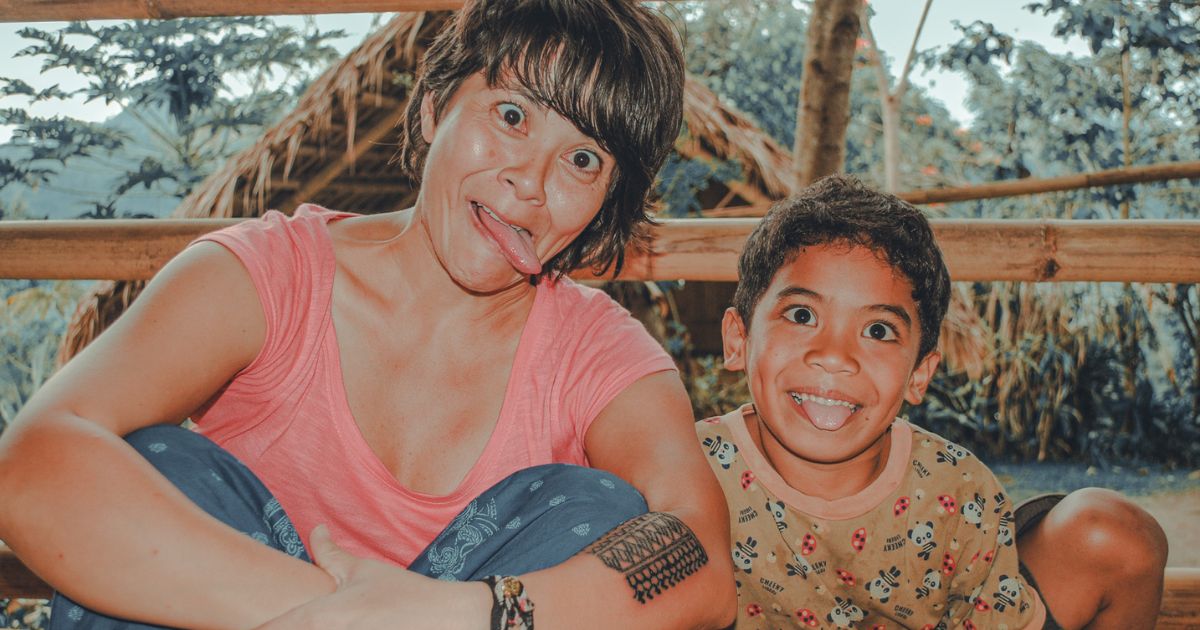
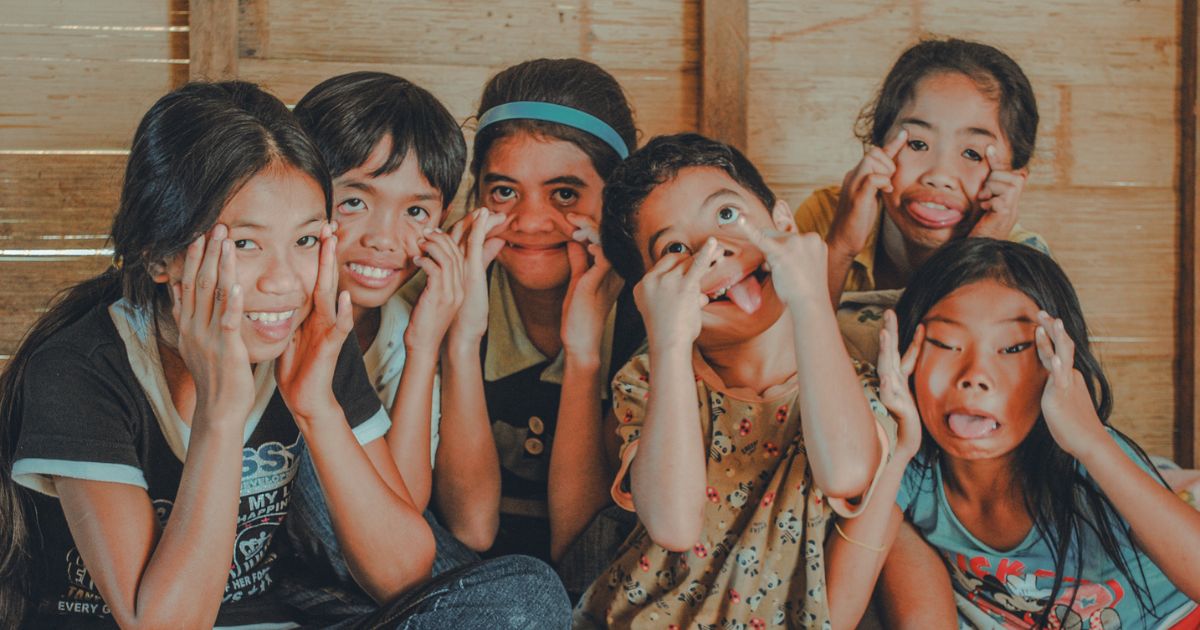
We also shared with them our experiences in Northern Luzon and our stories about the people we met and the places we’d been to so far.
Tara, of Native American descent, also shared how they work beads in their Ojibwe tribe. She also showed some videos of their dances and their traditional clothes.
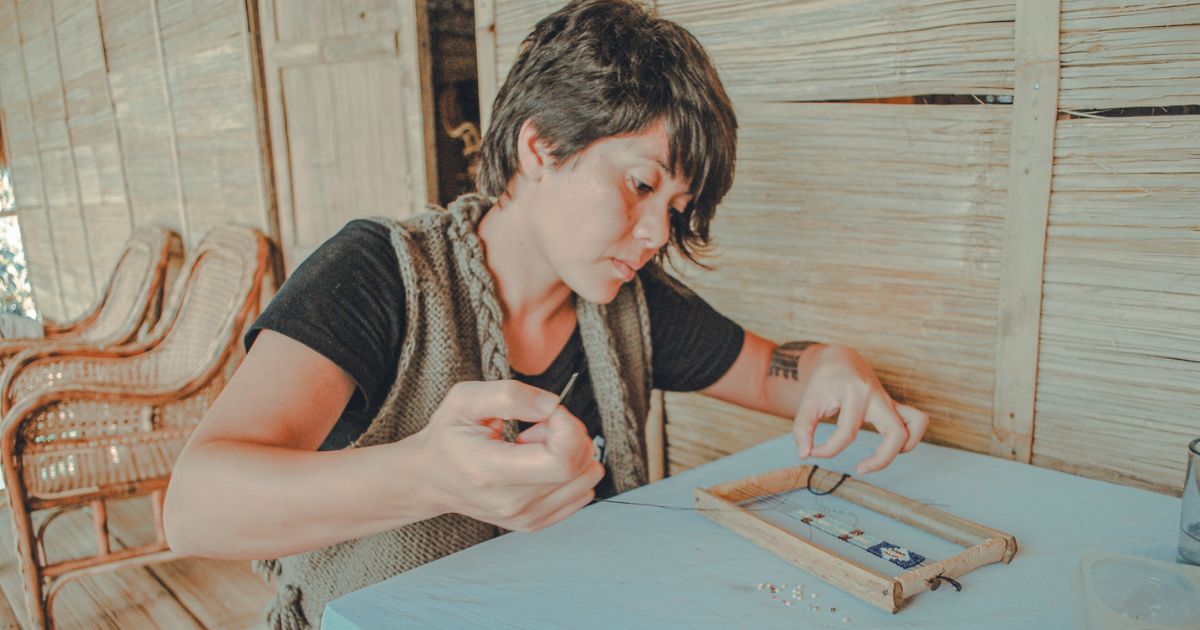
It was so great witnessing the merging of cultures, especially from my point of view. We are learning a lot about them, and they are learning about the culture from the other end of the Philippines (through our stories) and from another part of the world (through Tara).
The T’nalak Dream Weavers of Lake Sebu
We were also fortunate to meet a couple of dream weavers from Lake Sebu.
Manang Barbara is one of the more famous T’nalak weavers. She is training Manang Oyel, her niece, who is also her partner in making the tinalak.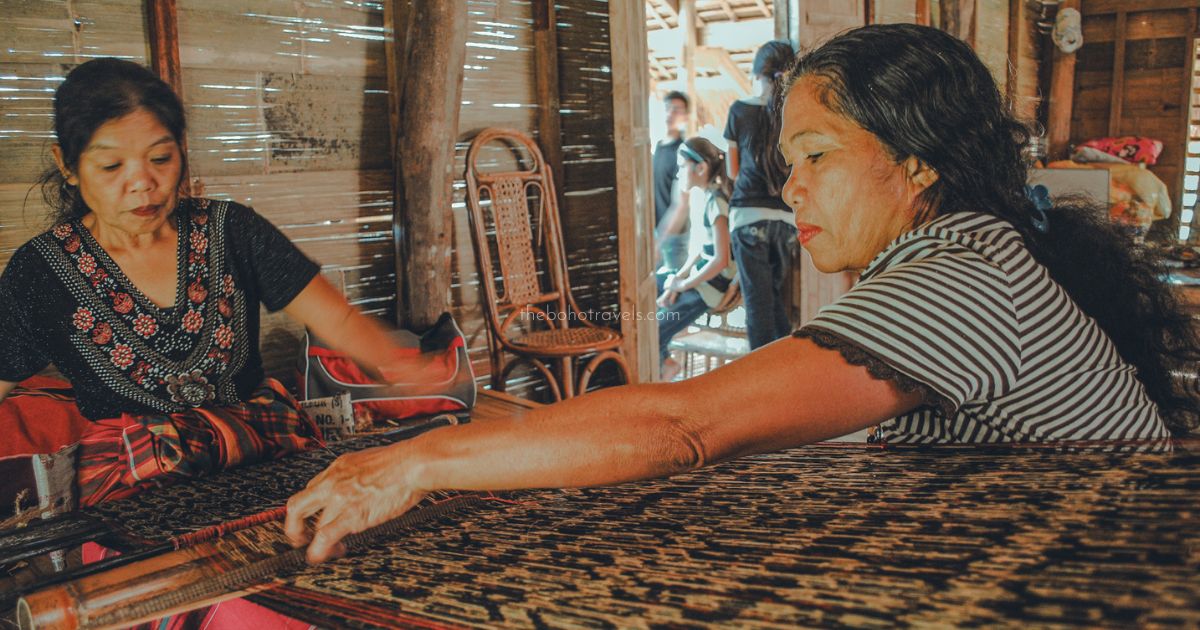
A tinalak is a cloth woven using abaca fibers in their original color or dyed red or black.

They believe that the weavers create the patterns in their dreams. So, the ladies who weave tinalak, like Manang Barbara and Manang Oyel, are called “dream weavers,” while their creations are sometimes called “weaved dreams.”
Manang Barbara explained that they work on the tinalak only when it’s cold because abaca fibers tend to break when it’s warmer. It takes them about six months to complete an entire pattern, and, when I visited them in 2012, they only sold it for Php 800.00 per yard.
Afternoon stroll around Lake Sebu
Tara and I decided to go for a walk on our own, apart from the kids. It was awesome being with them. But we also wanted more adult interaction and time to explore Lake Sebu on foot. We had yet to go far with our walk on the highway when we saw Tonton and Dondon, and they accompanied us on our stroll.
We stopped by several shops and bought some pasalubong. Tara also saw the malong worn by Lola Lonin, Rhea’s grandmother, and fell in love with it, so she bought one with a similar print.
We spent a few more minutes in the market, and while Tara was deciding what to buy, the boys and I were goofin’ around with the camera.
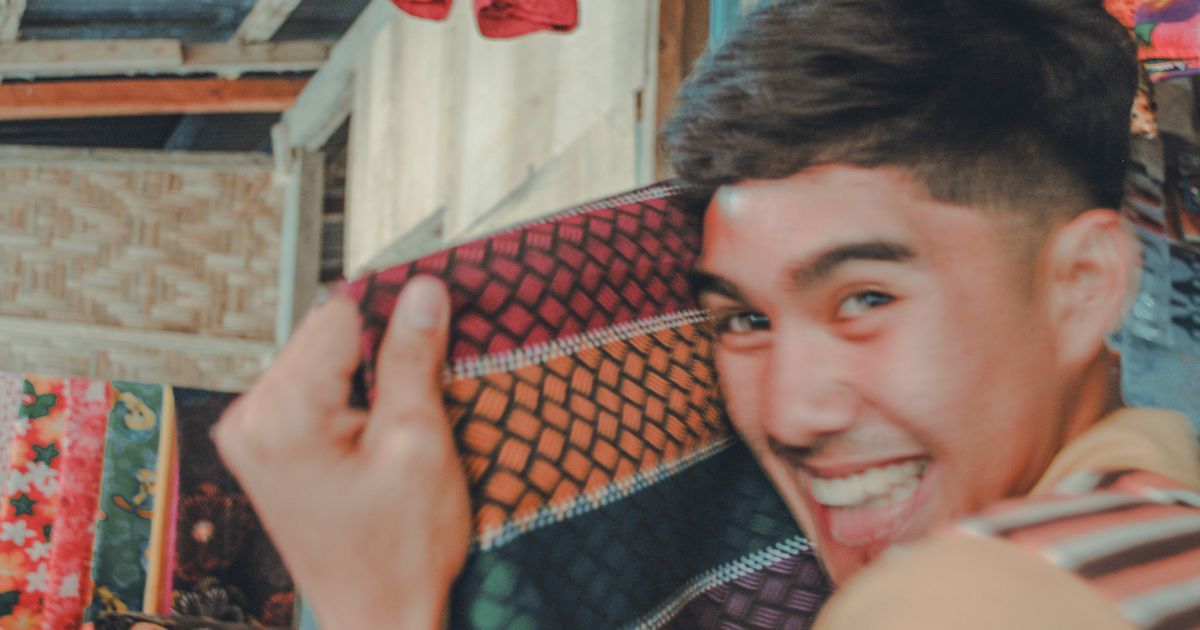
Our exciting habal-habal ride
When we were about ready to go home, it started raining. We would have walked it back under different circumstances because, you know, we love walking in the rain! But we had our gadgets with us, so we didn’t want to risk it.There were no more jeepneys returning to our place, so the boys said we should ride a habal-habal, an extended motorcycle.
I asked if we were getting one each or two. But Dondon and Tonton said that we’re all riding on one. Uhm. How do I do this? Hahaha!
So, it was the driver first, then me, Tara, Dondon, and Tonton. It was one of the scariest, craziest, and most fun rides of my life. I was screaming, “Manong, mag-ingat po kayo!” I was scared because it was my first time riding a motorbike with four passengers plus the driver. On a highway. While it’s raining.
Tara was laughing so hard because while I was screaming and (unintentionally) hurting the Manong driver, the boys were singing with lyrics describing how each of us was reacting to the situation. To appease me, Tara said, “Monica, he’s the driver, you know. He’s also riding with us.” Hahaha! Fine.
A visit from more T’boli kids
When we got to the School of Living Traditions, more T’boli kids welcomed us! They bombarded Tara with questions. Questions like: “How old are you?” “Where are you from?” “How can we be as beautiful as you when we get 35?”
Then, while Tara and I were having a short conversation, one of the girls said almost in awe, “Wow… ang ganda din nya magsalita! Bakit ganon?” Hahaha! I said, “Salamat. Lagi ko kasi silang kasama eh. Kaya napapraktis.” I translated this conversation to Tara, and she was smiling so pleasantly.

After the other kids left, our host family at Lake Sebu School of Living Traditions entertained us with traditional T’boli dance and music.
Andi and Tamtam performed Madal Mit Mata (Dance with Eyes). Dogdog took the lead in Madal Ewas (Monkey Dance). Rhea and Tamtam showed us how to do Madal Tahaw (Bird Dance). And, Dondon performed Madal Soyow (Warrior Dance).


They also taught Tara how to do the warrior dance.
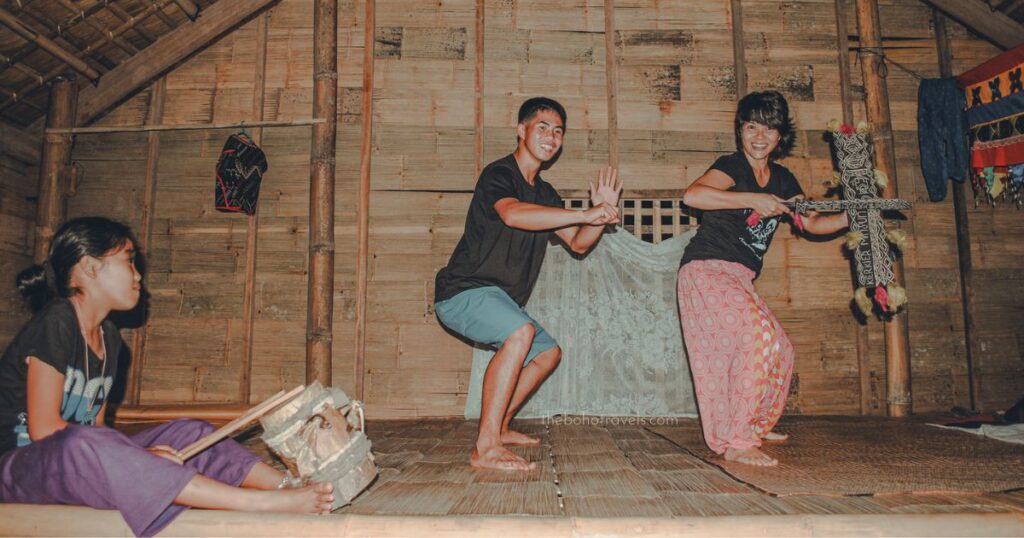
It was such a privilege to be in the presence of these talented kids.
Experiencing hospitality at Lake Sebu
My stay in Lake Sebu was a celebration of community, talent, and art. I had gotten to know our host family, have conversations with them, and get their openness and love for life, family, and community.
I also had the privilege of witnessing the talents of the T’boli kids and meeting and learning from T’boli dream weavers.
Before our trip ended, Tamtam, Andi, and Rhea each gave me a bracelet, which I did not remove for the duration of the trip, even while we were swimming on the beaches of Samar. I was touched by this gesture, the same way as I felt when our hosts in Tinglayan gave us their gifts.
Someone said that, in indigenous peoples’ communities, this gesture meant that the outsider had impacted the community in one way or another and that the community now considers the outsider as one of them. That made my soul smile. Again.
How to get to Lake Sebu School of Living Traditions
Address: Sitio Lambanig, Poblacion, Lake Sebu, Philippines
How to get there: From Manila, fly to General Santos. Take a multi-cab to the bus station to Marbel. Ride the bus from GenSan to Marbel and then from Marbel to Surrallah. Then, ride a van to Lake Sebu. Ask the driver to drop you off at SLT.
Mobile number: +63 935 456 9359
Facebook page: https://www.facebook.com/LakeSebuSLT

